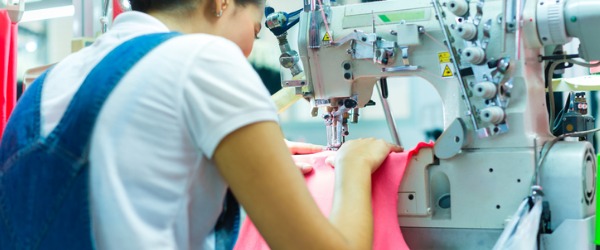What is a Sewing Machine Operator?
A sewing machine operator operates industrial or domestic sewing machines to join, reinforce, or decorate materials using various techniques. They typically work in the apparel, textile, and furniture manufacturing industries, producing a wide range of products, including clothing, bags, shoes, and upholstery.
Sewing machine operators are responsible for setting up and maintaining their machines, selecting the appropriate thread, needles, and stitching patterns, and guiding the fabric through the machine. They must be able to work quickly and accurately, with a high degree of precision and attention to detail. They also need to be able to identify and correct any problems with the sewing machine, such as broken needles or tangled threads, to ensure that production runs smoothly. A sewing machine operator may work independently or as part of a team, and may be required to work long hours or shift work to meet production deadlines.
What does a Sewing Machine Operator do?

Without sewing machine operators, the textile industry would be unable to produce the high volume of products needed to meet demand, and many other industries would also suffer. Their expertise and skill ensure that the products we rely on every day, from clothing to bedding to furniture upholstery, are well-made and durable.
Duties and Responsibilities
The duties and responsibilities of a sewing machine operator may vary depending on the type of products being produced and the manufacturing process. However, here are some common responsibilities that sewing machine operators typically perform:
- Set up and operate industrial or domestic sewing machines: Sewing machine operators are responsible for setting up and operating various types of sewing machines, such as single-needle, double-needle, and overlock machines. They must be able to select the appropriate machine for the task and ensure that it is set up correctly.
- Read and interpret work orders and production schedules: Sewing machine operators must be able to read and understand work orders and production schedules to determine the quantity, size, and type of products to be produced.
- Cut fabrics and other materials to the required size and shape: Sewing machine operators may be responsible for cutting fabrics and other materials to the required size and shape using cutting machines or scissors.
- Position materials and guide them through the sewing machine: Sewing machine operators must be able to position materials correctly and guide them through the sewing machine to produce the desired stitches and patterns.
- Inspect finished products for defects and quality issues: Sewing machine operators are responsible for inspecting finished products for defects and quality issues. They must be able to identify any issues and take corrective actions, such as re-sewing or trimming excess threads.
- Maintain and clean sewing machines: Sewing machine operators are responsible for maintaining and cleaning their sewing machines regularly to ensure that they operate efficiently and effectively.
Types of Sewing Machine Operators
There are several types of sewing machine operators, each specializing in different sewing techniques and products. Here are some common types of sewing machine operators:
- Apparel Sewing Machine Operator: This type of sewing machine operator specializes in the production of clothing, including shirts, pants, dresses, and jackets. They are skilled in operating single-needle machines, overlock machines, and cover stitch machines.
- Footwear Sewing Machine Operator: This type of sewing machine operator specializes in the production of footwear, including shoes, boots, and sandals. They are skilled in operating heavy-duty sewing machines, such as post-bed and cylinder-bed machines.
- Upholstery Sewing Machine Operator: This type of sewing machine operator specializes in the production of upholstered furniture, including sofas, chairs, and mattresses. They are skilled in operating industrial sewing machines, such as walking foot and long-arm machines.
- Bag and Luggage Sewing Machine Operator: This type of sewing machine operator specializes in the production of bags and luggage, including backpacks, handbags, and suitcases. They are skilled in operating various types of sewing machines, including single-needle, double-needle, and automated machines.
- Industrial Sewing Machine Operator: This type of sewing machine operator works in industrial settings, such as factories and production facilities, and may specialize in various types of products, including apparel, footwear, upholstery, and bags. They are skilled in operating a variety of sewing machines and have knowledge of production processes and quality control standards.
What is the workplace of a Sewing Machine Operator like?
The workplace of a sewing machine operator can vary depending on the type of products they are producing and the industry they work in. However, most sewing machine operators work in manufacturing facilities, such as factories or production lines, where they operate industrial sewing machines to produce products on a large scale.
The environment in which sewing machine operators work can be fast-paced and can involve long hours, especially during peak production periods. The work may involve standing for extended periods, bending, and reaching, and can require a high degree of manual dexterity and hand-eye coordination. Sewing machine operators may work individually or as part of a team, and they may be required to meet production quotas or deadlines.
Safety is also an important consideration in the workplace of a sewing machine operator. They must be trained to operate their machines safely and follow safety protocols, such as wearing protective clothing and ensuring that their machines are properly maintained and secured.